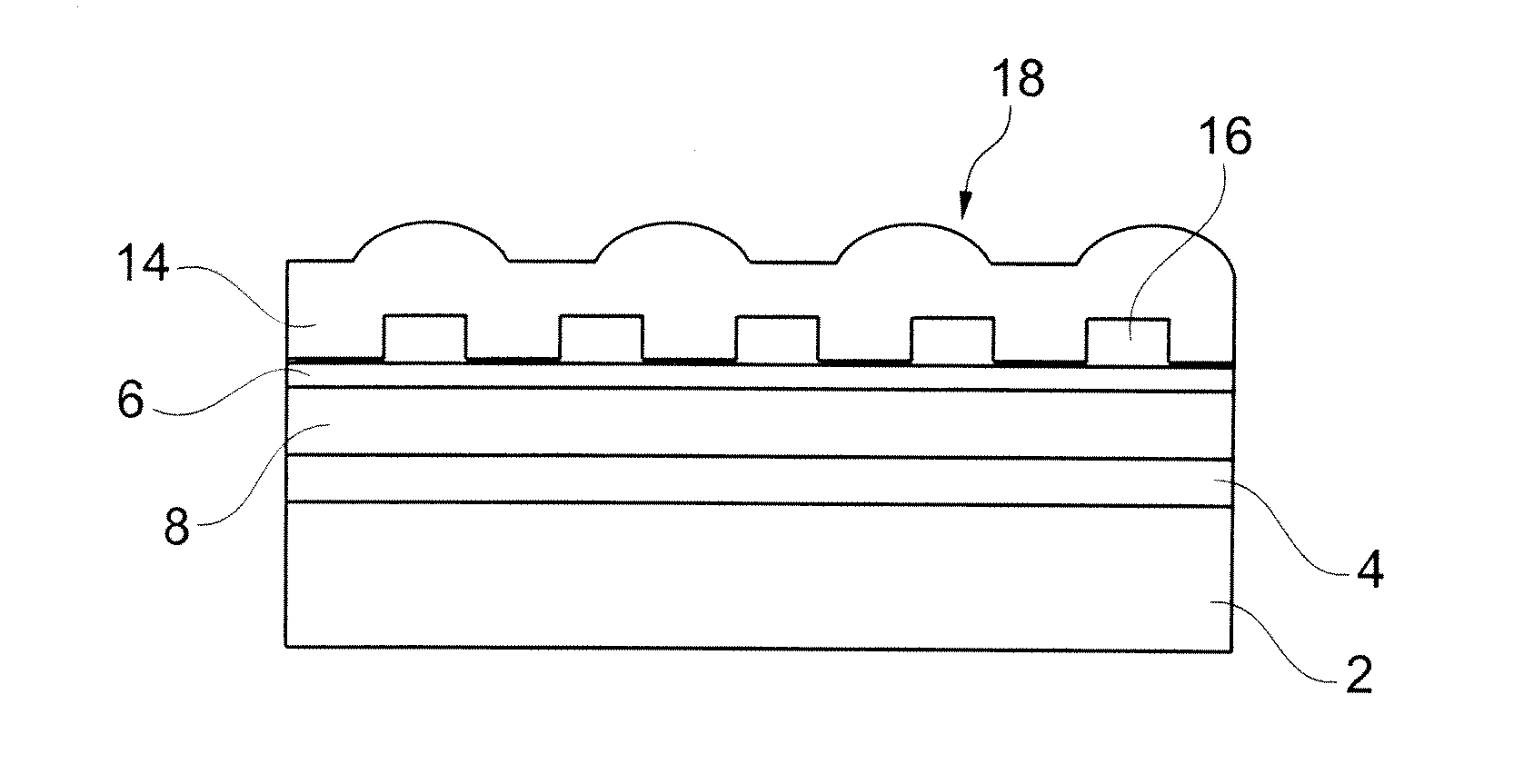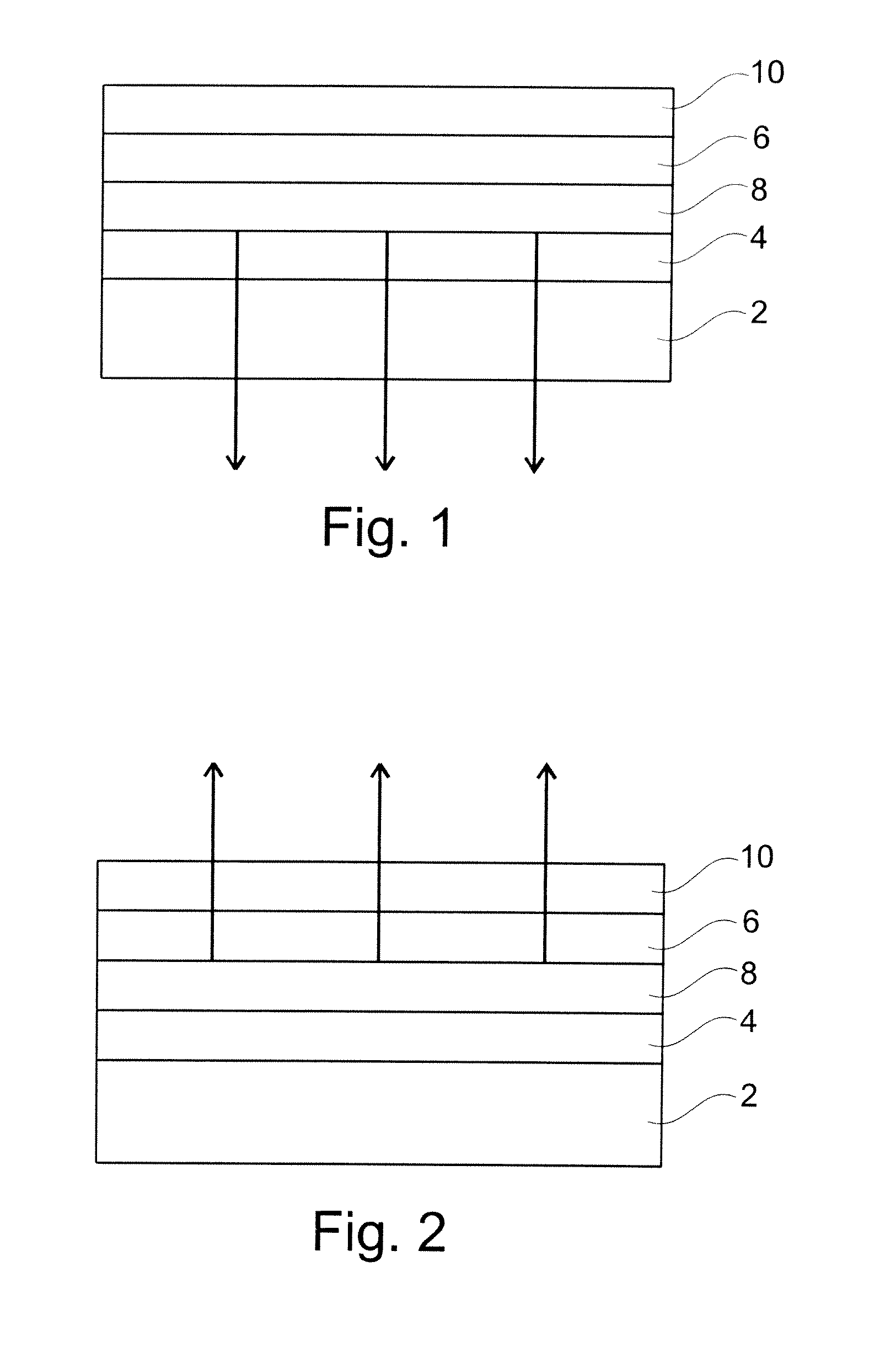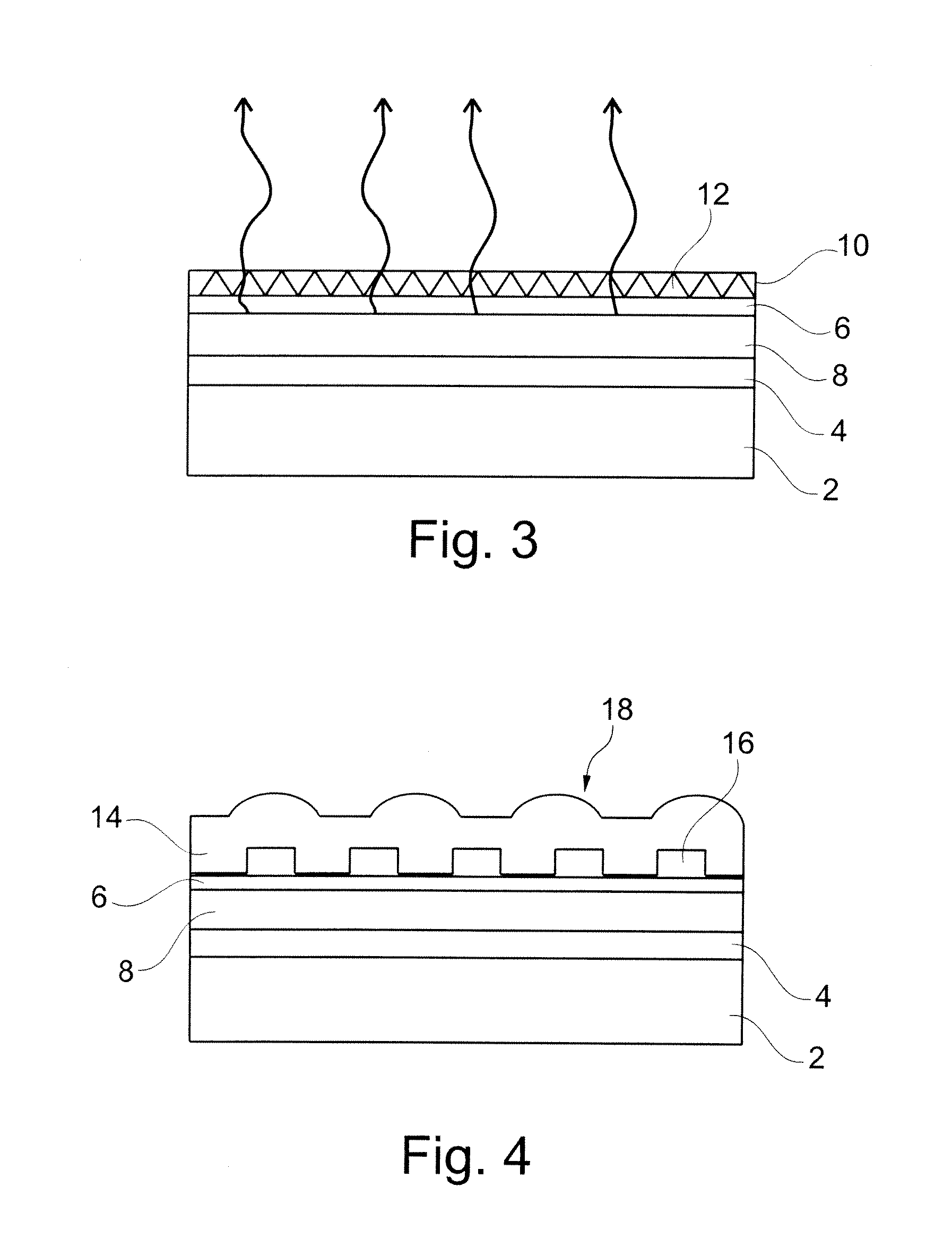Organic Electroluminescent Device
an electroluminescent device and organic technology, applied in static indicating devices, instruments, other domestic objects, etc., can solve the problems of affecting the angular colour variation of the device, the diffraction grating cannot be retracted, and the device's underlying layer may be damaged, so as to reduce the angular colour variation induced by optical structures such as diffraction gratings. , the effect of reducing the angular colour variation
- Summary
- Abstract
- Description
- Claims
- Application Information
AI Technical Summary
Benefits of technology
Problems solved by technology
Method used
Image
Examples
Embodiment Construction
[0033]FIG. 4 shows a top-emitting organic light emitting device in accordance with an embodiment of the present invention. The structure of the device is similar in many respects to the prior art arrangement illustrated in FIG. 3 and like reference numerals have been used for like parts. As in the arrangement of FIG. 3, the device comprises: a substrate 2; a first electrode 4 disposed over the substrate 2 for injecting charge of a first polarity; a second electrode 6 disposed over the first electrode 4 for injecting charge of a second polarity opposite to the first polarity; and an organic light emitting layer 8 disposed between the first and the second electrode. The difference between the arrangement illustrated in FIG. 4 and that illustrated in FIG. 3 lies in the provision of a double side structured encapsulant film 14 rather than a single side structured encapsulant film 10. The double side structured encapsulant film 14 comprises an optical structure 16 (in this case a diffrac...
PUM
| Property | Measurement | Unit |
|---|---|---|
| thick | aaaaa | aaaaa |
| thick | aaaaa | aaaaa |
| width | aaaaa | aaaaa |
Abstract
Description
Claims
Application Information
 Login to View More
Login to View More - R&D
- Intellectual Property
- Life Sciences
- Materials
- Tech Scout
- Unparalleled Data Quality
- Higher Quality Content
- 60% Fewer Hallucinations
Browse by: Latest US Patents, China's latest patents, Technical Efficacy Thesaurus, Application Domain, Technology Topic, Popular Technical Reports.
© 2025 PatSnap. All rights reserved.Legal|Privacy policy|Modern Slavery Act Transparency Statement|Sitemap|About US| Contact US: help@patsnap.com



